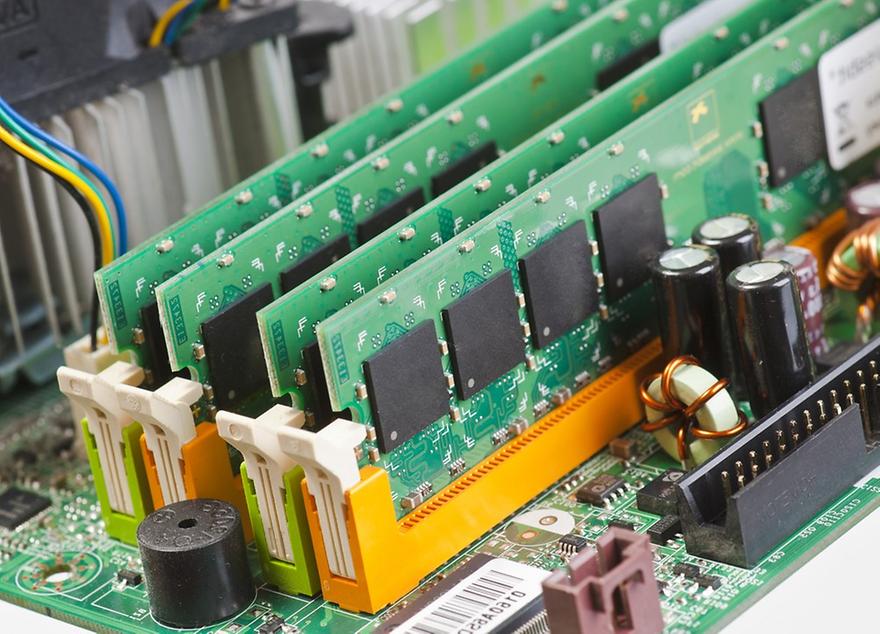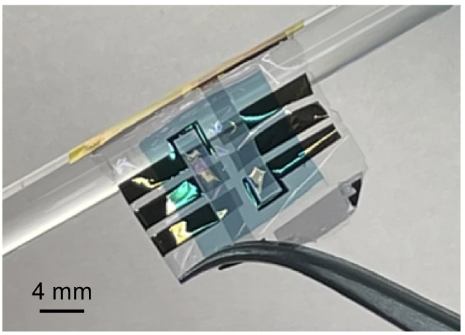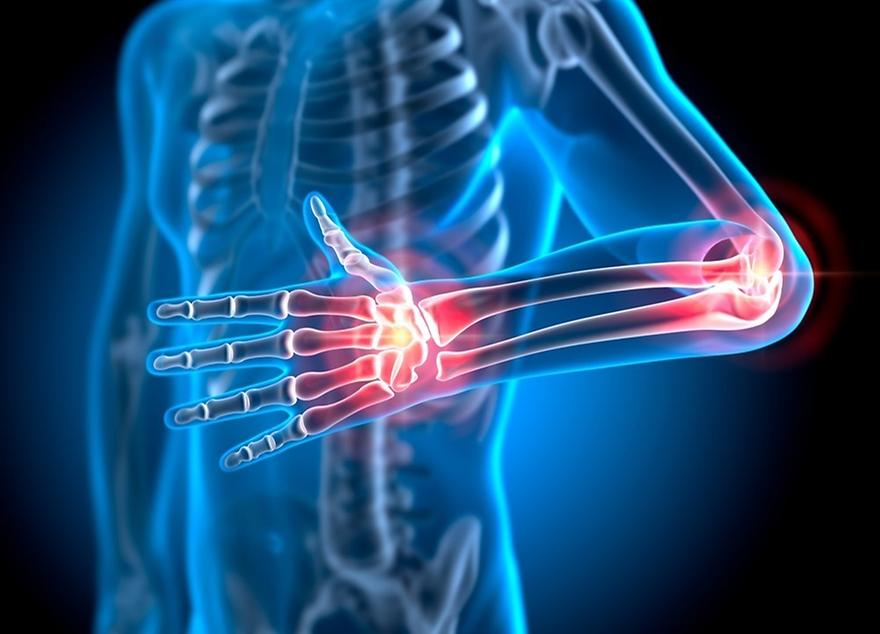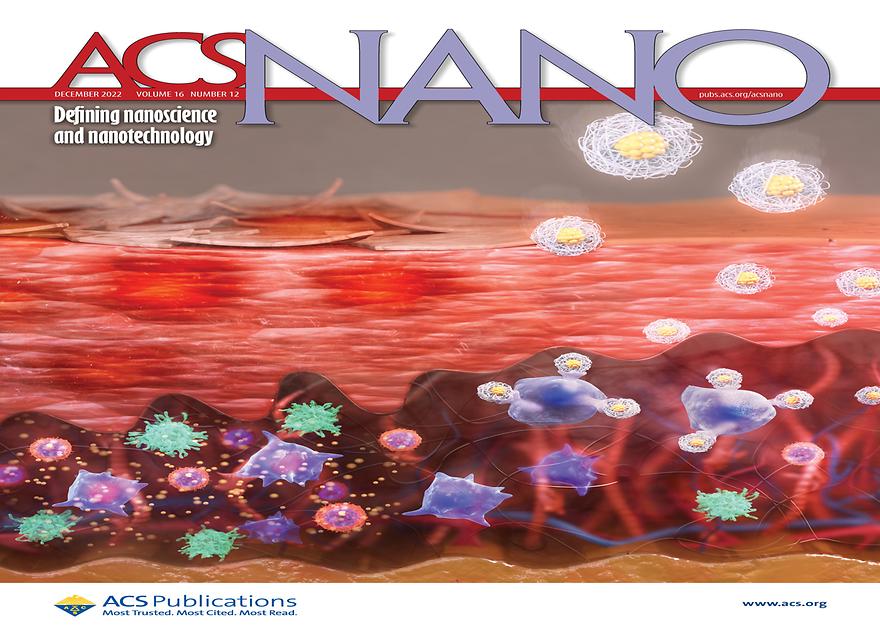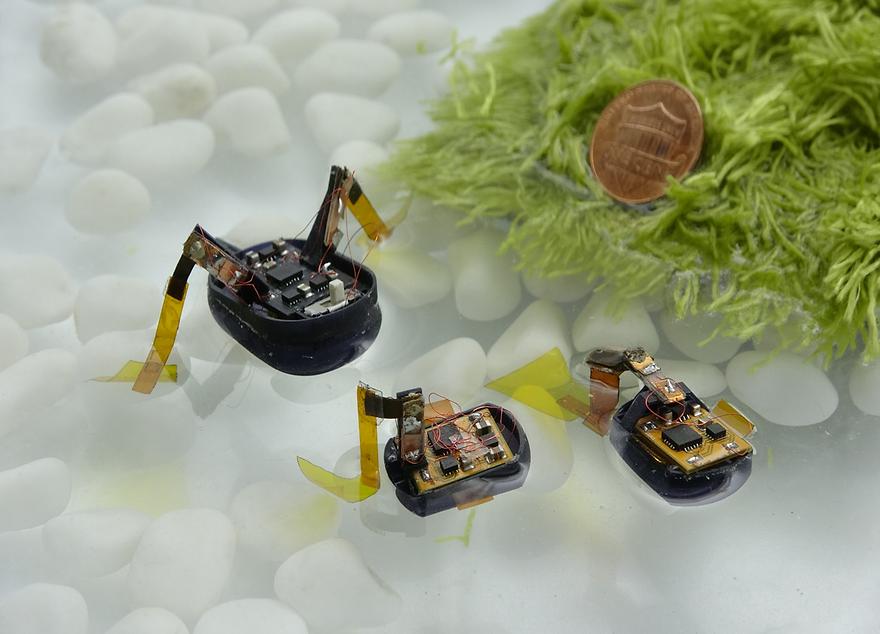-
Researchers develop a method for controlling oxygen vacancies in oxides to enhance resistive switching behaviorOxygen vacancies in oxides are often used in memory devices, yet controlling their mechanism proves to be challenging. Now, Korean researchers have come up with a novel method to control the distribution of the oxygen vacancies using electrostatic potential constraints, thereby enhancing the reliability of device performance. This breakthrough potentially paves the way for next-generation memory devices, multi-bit memristors, analog switches, and neuromorphic computing hardware. Researchers have shown that managing oxygen vacancies in transition metal oxide structures allows for consistent resistive switching in memory devices.Oxygen vacancies, which are common functional point defects in various oxides, play a crucial role in memory device technology. This includes "resistive switching devices," which control electrical resistance through the distribution of oxygen vacancies. Given the potential of resistive switching devices for next-generation semiconductor technology, it is crucial to understand the mechanism underlying resistive switching for future advancements of this technology. However, applying this technology is fraught with challenges, particularly in managing the conductance of oxide crystals, resulting in unpredictable and uneven switching behavior.To address these challenges, a team of researchers from Ajou University, Gachon University, and Sejong University has developed a new method for controlling oxygen vacancies in LaAlO3/SrTiO3 (LAO/STO) structures to achieve uniform and consistent resistive switching. Their findings were published in Small on 7 May 2023. Associate Professor Hyungwoo Lee from Ajou University, who led the study, says, “While most studies concentrate on the ‘conducting filament’ mechanism, which relies on a small number of point defects at the filament's edge to influence the overall resistance, switching reliability, and speed, our approach takes a distinct path. Instead of relying on the randomly determined geometry of the conducting filament, we have developed a method that focuses on controlling the density of uniformly distributed point defects across the oxide film.”The team achieved this by imposing electrostatic potential constraints in the LAO/STO structures, ensuring uniform defect distribution and density. This innovative approach reduced the randomness in the movement of the defects and thus provided a solution for reliable performance. Furthermore, evidence of the control of oxygen vacancies was obtained through spectral analysis and Monte–Carlo simulation modeling.While further research is needed for practically applying this approach, the current study demonstrates effective control of oxygen vacancy distribution. By storing information based on defect concentration (similar to biological ionic channels), the switching characteristics of oxide materials can be enhanced. Consequently, this breakthrough paves the way for next-generation memory devices, multi-bit memristors, and analog switching devices, with potential applications in neuromorphic computing hardware as well. “In this regard, our study has opened the door to a future where electronic device technologies based on functional point defects could become a reality,” concludes Dr. Lee.ReferenceAuthors:Jaeyoung Jeon1,2, Kitae Eom3, Minkyung Lee1,2, Sungkyu Kim4, and Hyungwoo Lee1,2,*Title of original paper:Collective Control of Potential-Constrained Oxygen Vacancies in Oxide Heterostructures for Gradual Resistive SwitchingJournal:SmallDOI:10.1002/smll.202301452Affiliations:1Department of Physics, Ajou University2Department of Energy Systems Research, Ajou University3School of Advanced Materials Science and Engineering, Sungkyunkwan University (SKKU) 4Department of Nanotechnology and Advanced Materials Engineering, Sejong University*Corresponding author’s email: hyungwoo@ajou.ac.kr About Ajou UniversityFounded in 1973, Ajou University has quickly grown to become one of the top universities in the Republic of Korea. With over 15,000 students and 50 research centers in diverse fields, Ajou University partakes in the largest national research and graduate education project funded by the Korean Ministry of Education. In line with its recently reformed vision, Ajou University’s goal is to change society by connecting minds and carrying out high-impact research to improve the welfare of people in and outside Korea. Website: https://www.ajou.ac.kr/en/index.do About Associate Professor Hyungwoo Lee Hyungwoo Lee is an Associate Professor at Ajou University, specializing in Physics. His group focuses on designing oxide heterostructures to explore emergent physics. Among his research interests are the 2D electron gas (2DEG) at oxide heterointerfaces, ferroelectric polarizations, exotic magnetisms, superconductivity, and quantum transport properties. Additionally, Dr. Lee's team develops resistive switching devices, ferroelectric tunnel junctions, and quantum devices using atomically-designed oxide heterostructures. Prior to his role at Ajou University, he completed postdoctoral training at Chang-Beom Eom's lab at the University of Wisconsin-Madison and earned a Ph.D. in Physics from Seoul National University in 2013.
-
55
- 작성자오동우
- 작성일2023-12-01
- 3348
- 동영상동영상
-
Researchers have now developed semitransparent organic photovoltaic cells with high flexibility and durability for seamless integration into various surfaces. Organic photovoltaics (OPVs) as lightweight, transparent, and thin solar cells are promising for the generation of electricity from sunlight. Such cells can transform surfaces like windows and roofs into self-sustaining power sources. Recently, researchers have made significant strides in enhancing OPVs, making them strain-durable and ultra-flexible. This breakthrough can open the doors to a wide range of applications, including the integration of solar power generation into windows, Internet of Things devices, clothing, and more. Organic photovoltaics (OPVs) are lightweight, transparent, and flexible, making them suitable for seamless and aesthetic integration into various surfaces for electricity generation, including windows and wearable devices. Image courtesy: Lee, Hanbee, et al. "Ultra-flexible semitransparent organic photovoltaics." npj Flexible Electronics 7.1 (2023): 27.Solar energy is undoubtedly an abundant source of energy, but its potential is far from being fully harnessed. Currently, most solar cells are installed in large, flat areas like rooftops or solar farms due to their low flexibility and transparency. An emerging class of transparent, lightweight, ultrathin, and flexible solar cells known as organic photovoltaics (OPVs) is revolutionizing the way in which electricity is generated for powering our daily needs, overcoming the limits of surface area and flexion. These advanced solar cells can be integrated into windows, Internet of Things devices, and even clothing, turning these surfaces into self-sustaining sources of power, with the ability to generate electricity from sunlight.However, they are far from being ideal. There is an intrinsic trade-off between power conversion efficiency (PCE) and average visible transmittance (AVT), which limits the performance of these OPVs. Furthermore, the inherent brittleness of traditional transparent electrodes such as indium tin oxide challenges their durability and makes it difficult to achieve ultra-flexibility, amidst extreme repetitive mechanical stress and optical transparency, simultaneously. Therefore, significant research efforts are underway to overcome these challenges and make the OPVs more durable, efficient, and transparent for advancing their use. Advancing research in this direction, a new study published in npj Flexible Electronics on 3 June 2023 by an international team of researchers led by Assistant Professor Sungjun Park and Associate Professor Jong H. Kim from Ajou University, Republic of Korea, has now proposed OPVs with thinner, ultra-flexible, and semitransparent electrode materials, named “semitransparent organic photovoltaics” (or ST-OPVs). The ST-OPVs proposed in this study have a thickness below two micrometers, are fabricated on a parylene/SU-8 substrate, and utilize an ultrathin silver (Ag) bottom electrode and a dielectric/metal/dielectric (DMD) top electrode. The DMD structure, consisting of molybdenum trioxide (MoO3)/Ag/MoO3 layers, offers excellent optical transparency. Thanks to their nanometer-scale thickness, the ultrathin electrodes impart the proposed OPVs remarkable durability, transparency, and ultra-flexibility. On testing their optical and electrical performance, the OPV devices retained 73% of their initial efficiency after undergoing 1000 compression–release cycles at a compressive strain of 66%. Moreover, the average visible light transmittances remained above 30%. Elaborating further on this, Dr. Kim says, “Notably, the ST-OPVs developed by us achieved a peak PCE of 6.93% and an AVT exceeding 30%, pointing to their high performance. Moreover, to the best of our knowledge, the unprecedented flexibility displayed by these OPVs represents the highest performance reported thus far.” These characteristics make the proposed ST-OPVs suitable for integration into a wide variety of surfaces, without compromising the overall functionality or aesthetics. For instance, they could be utilized for designing windows that are a blend of utility and design and can generate electricity. Moreover, they could be incorporated into wearable devices to serve as a reliable and convenient source of power generation for these devices. “In the long-term, the practical implementation of our devices could significantly enhance energy generation in diverse settings, right from buildings to human bodies. This, in turn, can contribute to the fulfillment of the daily-life energy needs of people while maintaining environmental and personal well-being,” concludes Prof. Park. ReferenceAuthors:Hanbee Lee1, Soyeong Jeong2, Jae-Hyun Kim3, Yong-Ryun Jo4, Hyeong Ju Eun5, Byoungwook Park6, Sung Cheol Yoon6, Jong H. Kim5,*, Seung-Hoon Lee7,*, and Sungjun Park1,3,*Title of original paper:Ultra-flexible semitransparent organic photovoltaicsJournal:npj Flexible Electronics DOI:10.1038/s41528-023-00260-5 Affiliations:1Department of Electrical and Computer Engineering, Ajou University 2Department of Chemistry and Centre for Processable Electronics,Imperial College London3Department of Intelligence Semiconductor Engineering, Ajou University4Advanced Photonics Research Institute (APRI), Gwangju Institute of Science and Technology (GIST)5Department of Molecular Science and Technology, AjouUniversity6Division of Advanced Materials, Korea Research Institute of Chemical Technology (KRICT)7Division of Advanced Materials Engineering, Kongju National University*Corresponding authors’ emails: jonghkim@ajou.ac.kr (Jong H. Kim); leesh23@kongju.ac.kr (Seung-Hoon Lee); sj0223park@ajou.ac.kr (Sungjun Park)About Ajou UniversityFounded in 1973, Ajou University has quickly grown to become one of the top universities in the Republic of Korea. With over 15,000 students and 50 research centers in diverse fields, Ajou University partakes in the largest national research and graduate education project funded by the Korean Ministry of Education. In line with its recently reformed vision, Ajou University’s goal is to change society by connecting minds and carrying out high-impact research to improve the welfare of people in and outside Korea. Website: https://www.ajou.ac.kr/en/index.do About Dr. Sungjun Park and Prof. Jong H. Kim Sungjun Park is an Assistant Professor in the Department of Electrical and Computer Engineering and Jong H. Kim is an Associate Professor in the Department of Molecular Science and Technology at Ajou University, Republic of Korea. Their research focuses on the development of novel solution-processed organic and hybrid optoelectronics materials and soft electronic devices and their integration into wearable sensors and biomedical applications. Dr. Park can be reached by email at sj0223park@ajou.ac.kr, and Dr. Kim can be reached by email at jonghkim@ajou.ac.kr.
-
53
- 작성자오동우
- 작성일2023-10-13
- 3296
- 동영상동영상
-
Scientists identify a novel orally active small-molecule tumor necrosis factor inhibitor that suppressed symptoms of inflammatory arthritis in mice Autoimmune diseases such as rheumatoid arthritis are known to be associated with tumor necrosis factor (TNF), a proinflammatory cytokine. While these conditions are known to have a profound impact on the lives of patients, researchers from Korea have identified a small-molecule called TNF-inhibitory molecule 1 (TIM1), which can inhibit excessive signaling by TNF, lower arthritis-related inflammation, and ultimately improve patients’ quality of life. Scientists from Korea have identified TIM1c, an orally active small-molecule inhibitor, which inhibits excessive signaling by the proinflammatory cytokine tumor necrosis factor, paving the way for effective treatment of autoimmune diseases, including rheumatoid arthritis.Image courtesy: peterschreiber.media from Shutterstock Millions of people across the world suffer from chronic pain and disability that arises from autoimmune diseases like rheumatoid arthritis (RA), which reduces their overall quality of life. The proinflammatory cytokine tumor necrosis factor (TNF)—a type of protein secreted by specialized cells in the immune system—is known to play a major role in conditions such as RA. While TNF provides protection against tumors and pathogens, its dysregulation or regular excessive production has been associated with an array of pathological conditions such as inflammatory bowel disease, RA, Alzheimer’s disease, and even cancer. Over the years, scientists have developed several drugs that can bind to and inhibit the excessive production of the signaling protein TNF. However, while these therapeutics have shown clinical success, they are often quite expensive and not available in the form of easy-to-use oral medications. Motivated by the need for improving the lives of patients by developing innovative treatments, a team of researchers, led by Professor Sangdun Choi from Ajou University, has identified a new orally active small-molecule, named TNF-inhibitory molecule 1c (TIM1c). Their study was published in Volume 15, Issue 759 of the journal Science Signaling on 8 November 2022. First, the team utilized a ligand-based and combined structure-based virtual screening method to identify the starting lead compound. They idenfitied TIM1, which inhibited TNF-induced death of human and mouse cells, and further investigated its mechanism of action. “Unraveling the molecular mechanisms of disease pathways, cellular receptors, and their connection to TNF signaling can provide the necessary information needed for the development of less cytotoxic and more potent small-molecule inhibitors of TNF than the commercially available ones,” explains Prof. Choi, while elaborating about this study. A series of experiments revealed that TIM1 inhibited the secretion of inflammation-triggering cytokines IL-6 and IL-8 by disrupting the formation of a functional TNF homotrimer—a stable and biologically active form of TNF. It thus prevented the protein from attaching to its receptors found on cell membranes, inhibiting the TNF signaling pathway. The team also found that in the mouse model, TIM1c, a more potent variant of TIM1, was not only bioavailable on oral administration, but also reduced overall arthritis index and paw swelling and improved joint pathology. The immunological effects of orally administered TIM1c were similar to those of the FDA-approved TNF-targeting biologic drug etanercept, which acts as a TNF receptor decoy, in mice. The promising small-molecule therapy TIM1c and the insights into its working mechanism have opened new avenues for the development of effective therapeutics for TNF-mediated inflammatory diseases. “We believe that our research could enhance treatment adherence, reduce healthcare costs, and ultimately improve the quality of life by providing patient-friendly oral alternatives to traditional injectable biologics,” concludes Prof. Choi. Here’s hoping that these findings improve the life of patients suffering from chronic and debilitating autoimmune conditions! ReferenceAuthors:Nasir Javaid1, Mahesh Chandra Patra1, Da-Eun Cho2, Maria Batool1,3, Yoongeun Kim2, Gwang Muk Choi2, Moon Suk Kim1, Dae-Hyun Hahm2,4,*, and Sangdun Choi1,3,*Title of original paper:An orally active, small-molecule TNF inhibitor that disrupts the homotrimerization interface improves inflammatory arthritis in miceJournal:Science Signaling DOI:10.1126/scisignal.abi8713 Affiliations:1Department of Molecular Science and Technology, Ajou University 2Department of Biomedical Sciences, Graduate School, Kyung Hee University3S&K Therapeutics, Ajou University Campus Plaza4Department of Physiology, College of Medicine, Kyung Hee University*Corresponding authors’ email id’s: dhhahm@khu.ac.kr (D.-H.H.); sangdunchoi@ajou.ac.kr (S.C.)About Ajou UniversityFounded in 1973, Ajou University has quickly grown to become one of the top universities in the Republic of Korea. With over 15,000 students and 50 research centers in diverse fields, Ajou University partakes in the largest national research and graduate education project funded by the Korean Ministry of Education. In line with its recently reformed vision, Ajou University’s goal is to change society by connecting minds and carrying out high-impact research to improve the welfare of people in and outside Korea. Website: https://www.ajou.ac.kr/en/index.do About Dr. Sangdun ChoiSangdun Choi is a distinguished scientist known for his contributions to Toll-like receptor (TLR) biology and autoimmune disease research. Currently, he is a Professor at the Department of Molecular Science and Technology, Ajou University. With over 200 published papers and several patents to his name, he has made significant strides in the development of small-molecule therapeutics targeting TNF signaling. Dr. Choi's groundbreaking work has earned him numerous accolades in the field of immunology, and his editorial roles in reputable research journals reflect his leadership in advancing scientific knowledge. He is also the editor of two editions of the 'Encyclopedia of Signaling Molecules,' showcasing his expertise in molecular signaling pathways.
-
51
- 작성자오동우
- 작성일2023-09-20
- 3250
- 동영상동영상
-
Researchers investigate the potential of self-assembled hyaluronic acid nanoparticles for treating inflammatory skin diseasesConventional topical approaches to treat psoriasis have a variety of side effects. To address these limitations, researchers from Korea, investigated the potential of self-assembled hyaluronic acid nanoparticles in mouse models and found that they can effectively treat psoriasis without overt side effects, and can also pave the way for powerful and safe nanomedicine platforms for other chronic inflammatory diseases. Image source: Reprinted (adapted) with permission from ACS Nano 2022, 16,12, 20057-20074. Copyright 2022 American Chemical Society Caption: Hyaluronic acid nanoparticles show potential for effective treatment of psoriasis, without overt side effects and can also pave the way for a powerful nano-medicine platform for a variety of inflammatory diseases.Psoriasis is a chronic skin condition characterized by itchy and painful skin patches. It occurs when the body’s immune system mistakenly attacks its own healthy skin. Conventional psoriasis treatments (oral medications) primarily aim to alleviate symptoms by limiting inflammatory responses. Topical therapy, applied directly on the skin, on the contrary, offers a more favorable non-invasive and safer option. However, its long-term use and high dosage may cause a variety of side effects.To address these limitations, a team of researchers from Korea, led by Professor Wook Kim and Dr. Eunha Kim from Ajou University investigated the potential of self-assembled hyaluronic acid nanoparticles (HA-NPs) for treating psoriasis. Their study was published in Volume 16, Issue 12 of the journal ACS Nano on 14 November, 2022. “HA-NPs have previously served as biocompatible and safe drug delivery carriers due to their unique chemical and biological properties. They can exert their own therapeutic effects while maintaining their role as drug carriers,” explains Prof. Kim.The researchers conducted a series of experiments to assess the impact of HA-NPs on mice with psoriasis-like skin dermatitis induced by imiquimod (IMQ) and interleukin-23 (IL-23). They found that HA-NPs could penetrate IMQ-inflamed skin and target specialized immune cells called ‘macrophages’ through immune receptors called TLR4. They were able to suppress the activation of macrophages associated with worsening psoriasis. The results showed that HA-NPs reduced skin inflammation caused by IMQ and IL-23, while restoring the compromised skin barrier and alleviating psoriasis-like skin dermatitis. Notably, the researchers discovered that the outermost layer (shell) of HA-NPs was critical to its efficacy, which was comparable to other conventional psoriasis therapeutics commonly used in clinical settings. Highlighting the impact of their study, Dr. Kim says “HA-NPs could provide a potent nano-medicine platform capable of working at low dosages with minimal side effect, exerting synergistic effects against psoriasis and other inflammatory diseases”. However, the researchers acknowledge that further validation is required because these experiments were conducted on mice and may not accurately reflect the conditions of a human body.Nonetheless, novel psoriasis treatments such as this one may help to reduce the social distress caused by exclusion, discrimination, and stigma that people with psoriasis and other skin disorders face on a regular basis.ReferenceAuthors:1Wang Hee Lee, 1Jun Gi Rho, 1Yeyoung Yang, 1Seulbi Lee, 1Sohui Kweon, 2Hyung-Mo Kim, 1Juhwan Yoon, 1Hongseo Choi, 1Eunyoung Lee, 1Su Ha Kim, 1Sohee You, 1Yujin Song, 3Young Soo Oh, 4Hwan Kim, 5,10Hwa Seung Han, 1Ji Hye Han, 6Myeongwoo Jung, 2Young Hwan Park, 1Yang Seon Choi, 6Sukyoung Han, 7Junho Lee, 1Sangdun Choi, 8Jung-Woong Kim, 9, 11Jae Hyung Park, 6Eun Kyung Lee, 3Woo Keun Song, 1Eunha Kim* and 1Wook Kim*Title of original paper:Hyaluronic Acid Nanoparticles as a TopicalAgent for Treating PsoriasisJournal:ACS NanoDOI:https://doi.org/10.1021/acsnano.2c07843 Affiliations1Department of Molecular Science & Technology, Ajou University, Korea2KIURI Research Center, Ajou University, Korea3Cell Logistics Research Center, School of Life Sciences, Gwangju Institute of Science and Technology, Korea4GIST Central Research Facilities, Bio Imaging Laboratory, Gwangju Institute of Science and Technology, Korea5School of Chemical Engineering, College of Engineering, Sungkyunkwan University, Korea6Department of Biochemistry, College of Medicine, The Catholic University of Korea, Korea7Pharmaceutical Institute, FromBIO, Suwon, Korea8Department of Life Science, Chung-Ang University, Korea9School of Chemical Engineering, Sungkyunkwan University, Korea10Natural Product Informatics Research Center, Korea Institute of Science and Technology (KIST),11College of Engineering and Biomedical Institute for Convergence at SKKU (BICS), Sungkyunkwan University, Korea*Corresponding author’s email: wookkim21@ajou.ac.kr; ehkim01@ajou.ac.krAbout Ajou UniversityFounded in 1973, Ajou University has quickly grown to become one of the top universities in the Republic of Korea. With over 15,000 students and 50 research centers in diverse fields, Ajou University partakes in the largest national research and graduate education project funded by the Korean Ministry of Education. In line with its recently reformed vision, Ajou University’s goal is to change society by connecting minds and carrying out high-impact research to improve the welfare of people in and outside Korea. Website: https://www.ajou.ac.kr/en/index.doAbout Professor Wook KimProfessor Wook Kim is a full-time Professor at the Department of Molecular Science and Technology at Ajou University, Republic of Korea. He received his Ph.D. in Molecular Cell Biology from Gwangju Institute of Science and Technology (GIST) in 2006 under the guidance of Prof. Woo Keun Song. Before coming to Ajou University, he completed his postdoctoral training at the National Institute of Health (NIH), USA. His main research interests are identifying the pathogenesis of chronic inflammatory diseases and developing therapeutic agents to treat these diseases.About Dr. Eunha KimDr. Eunha Kim is an Associate Professor of Department of Molecular Science and Technology at Ajou University. He received his Ph.D. from the Department of Chemistry at Seoul National University in 2011 under guidance of Prof. Seung Bum Park. After postdoctoral work at Harvard Medical School guidance with Prof. Ralph Weissleder, he began his academic career in 2015 in the Department of Molecular Science and Technology at Ajou University in Suwon. His research integrates chemistry and biology to illuminate biology and enable next-generation diagnostic tools and therapeutics.
-
49
- 작성자국제교류팀
- 작성일2023-09-15
- 7692
- 동영상동영상
-
Researchers have developed a novel electroactive wrinkled nanomembrane electrode-based hydrogel actuator for untethered insect-sized aquabotsHydrogel-based actuators for soft robots suffer from slow response speed and poor controllability. To address these limitations, a team of researchers from Korea has now developed a new wrinkled nanomembrane electrode-based hydrogel actuator with high energy efficiency and power density. This technology can be used for developing active medical devices and insect-scale aquabots that can be operated in humanly inaccessible environments. A novel hydrogel actuator based on wrinkled nanomembrane electrodes can address the intrinsic limitations of hydrogel actuators, enabling the development of untethered soft robots and active medical devices.Image courtesy: Ministry of Science and ICT, KoreaDespite the rapid advancements in microprocessors, energy storage, and electromechanical actuators, the fundamental drawbacks of conventional electric motors using bulky and rigid components have limited the development of insect-scale soft robots. To resolve these issues, research efforts have focused on hydrogel-based soft actuators which allow diverse chemical modifications and high mechanical deformation. However, these actuators suffer from slow response speed and poor controllability owing to technical challenges in producing electrodes on the hydrogels.In a new study, a team of researchers from Korea, led jointly by Associate Professor Je-Sung Koh from the Department of Mechanical Engineering at Ajou University and Professor Jinhan Cho from the Department of Chemical and Biological Engineering at Korea University, has developed a new electroactive hydrogel actuator based on wrinkled nanomembrane electrodes (WNEs) driven by electroosmosis. In this process, an electric charge is applied to the hydrogel to speed up and regulate the movement of water inside it, thereby facilitating the controlled swelling of the hydrogel. Their study was published in the journal Science Robotics on 26 October 2022.The hydrogel actuator was created using capillary-assisted in situ assembly of metal nanoparticles. This method resulted in the formation of a WNE layer on the hydrogel's surface, offering a large surface area and a porous structure. Importantly, it exhibited high electrical conductivity and mechanical deformability, enabling the hydrogel to stretch up to 110% of its original size.These features enabled the WNE-coated hydrogel to exhibit outstanding actuation performance while operating at a voltages less than 3 V. It achieved a strain of over 50%, an energy density exceeding 700 kilojoules per cubic meter, and a power density surpassing 30 kilowatts per cubic meter. These remarkable characteristics allowed the researchers to develop an insect-scale autonomous aquabot with an onboard control unit and power source that occupied only 2% of its total mass. As a result, the robot achieved high locomotive speed and could move untethered independently.Dr. Koh highlights the practical importance of their study: “Considering the low-power requirements and the ability to miniaturize soft actuators, this technology could find application in exploration robots that operate in diverse environments inaccessible to humans.” Additionally, it has the potential to be utilized in active medical devices that can be attached to or implanted within the human body. “This technology can enable the development of soft autonomous robots and biomimetic insects. Furthermore, the fundamental technology of hydrogel electrode fabrication can easily transform functional hydrogels into electronic materials, and can thus be applied to various types of next-generation devices,” concludes an optimistic Dr. Koh.ReferenceAuthors:Jongkuk Ko1, Changhwan Kim2, Dongjin Kim2, Yongkwon Song1, Seokmin Lee1, Bongjun Yeom3, June Huh1,4, Seungyong Han2, Daeshik Kang2, Je-Sung Koh2,*, Jinhan Cho1,5,*Title of original paper:High-performance electrified hydrogel actuators based on wrinkled nanomembrane electrodes for untetheredinsect-scale soft aquabotsJournal:Science RoboticsDOI:10.1126/scirobotics.abo6463Affiliations:1Department of Chemical and Biological Engineering, Korea University2Department of Mechanical Engineering, Ajou University3Department of Chemical Engineering, Hanyang University4Department of Life Sciences, Korea University5KU-KIST Graduate School of Converging Science and Technology, Korea University*Corresponding authors’ emails: jinhan71@korea.ac.kr (Jinhan Cho); jskoh@ajou.ac.kr (Je-Sung Koh)About Ajou UniversityFounded in 1973, Ajou University has quickly grown to become one of the top universities in the Republic of Korea. With over 15,000 students and 50 research centers in diverse fields, Ajou University partakes in the largest national research and graduate education project funded by the Korean Ministry of Education. In line with its recently reformed vision, Ajou University’s goal is to change society by connecting minds and carrying out high-impact research to improve the welfare of people in and outside Korea. Website: https://www.ajou.ac.kr/en/index.doAbout the authorJe-Sung Koh is an Associate Professor at the Department of Mechanical Engineering at Ajou University in Korea. His research group is developing biologically-inspired robotic technologies. This includes abstracting principles from nature’s creatures and building robots using smart materials. His research interests encompass design and fabrication with smart materials, robots based on foldable structures, and soft robotics for enabling human-robot interaction.
-
47
- 작성자국제교류팀
- 작성일2023-07-27
- 3345
- 동영상동영상

